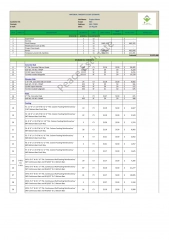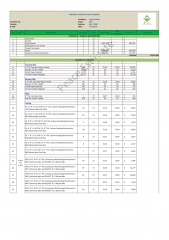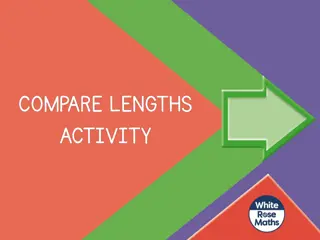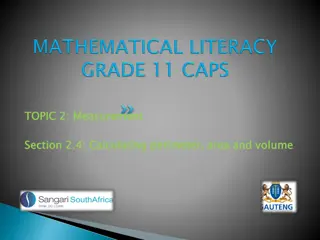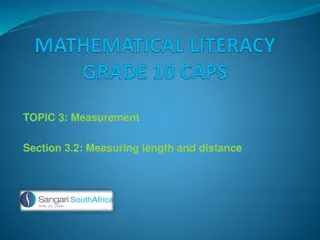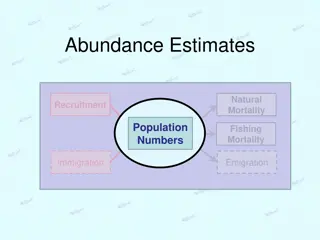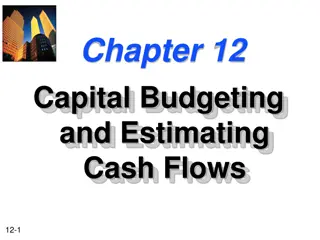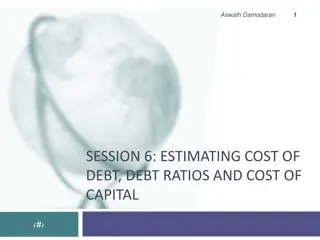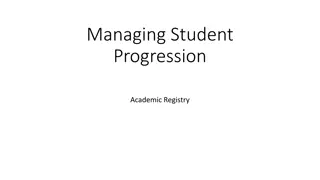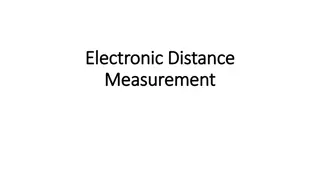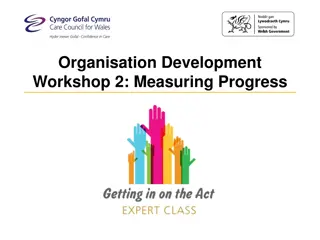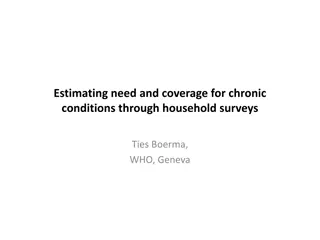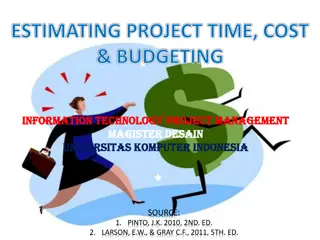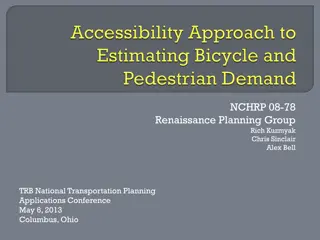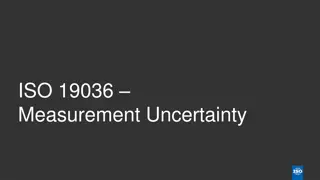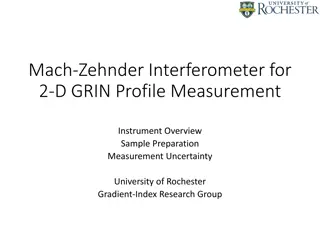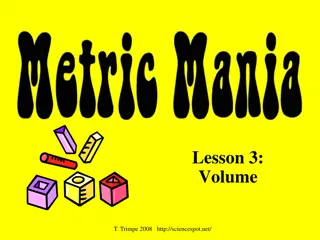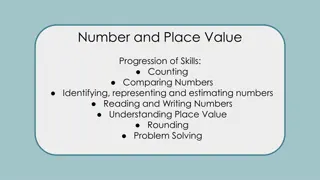Measurement Progression in Skills: Comparing, Estimating, Measuring, and Calculating
Explore the progression of measurement skills from Year 1 to Year 6, covering concepts like comparing lengths, mass, time, and volume, estimating measures including money, calculating areas of shapes and volumes of objects, sequencing events in chronological order, and much more. Enhance skills in comparing, estimating, measuring, and calculating with practical examples and problem-solving tasks.
Download Presentation

Please find below an Image/Link to download the presentation.
The content on the website is provided AS IS for your information and personal use only. It may not be sold, licensed, or shared on other websites without obtaining consent from the author. Download presentation by click this link. If you encounter any issues during the download, it is possible that the publisher has removed the file from their server.
E N D
Presentation Transcript
Measurement Progression of Skills: Comparing and Estimating Measuring and Calculating Telling the Time Converting
Comparing and Estimating Year 1 Year 2 Year 3 Year 4 Year 5 Year 6 Compare, describe and solve practical problems for: Lengths and height (e.g. long/short, longer/shorter, tall/short, double/half) mass/weight (e.g. heavy/light, heavier than, lighter than) Capacity and volume (e.g. full/empty, more than, less than, half, half full, quarter) Time (e.g. quicker, slower, earlier, later) Compare and order lengths, mass, volume/capacity and record the results using <, > and =. Estimate, compare and calculate different measures including money in pounds and pence. Calculate and compare the area of squares and rectangles including using standard units, square centimeters (cm2) and square metres (m2) and estimate the area of irregular shapes. Calculate, estimate and compare volume of cubes and cuboids using standard units, including centimetre cubed (cm3) and cubic metres (m3) and extending to other units such as mm3 and km3. Build on year 2 to ensure mastery. Estimating volume (e.g. using 1cm3 blocks to build cubes and cuboids) and capacity (e.g. using water). Sequence events in chronological order using language (e.g. before and after, next, first, today, yesterday, tomorrow, morning, afternoon and evening). Compare and sequence intervals of time. Compare durations of events, for example to calculate the time taken by particular events or tasks. Build on year 3 to ensure mastery. Estimate and read time with increasing accuracy to the nearest minute; record and compare time in terms of seconds, minutes, hours and o clock; use vocabulary such as a.m./p.m., morning, afternoon, noon and midnight. Build on year 3 to ensure mastery.
Measuring and Calculating Year 1 Year 2 Year 3 Year 4 Year 5 Year 6 Measure and begin to record the following: Lengths and heights mass/weight Capacity and volume Time (hours, minutes, seconds) Choose and use appropriate standard units to estimate and measure length/height in any direction (m/cm/); mass (kg/g); temperature ( C); capacity (litres/ml) to the nearest appropriate unit, using rules, scales, thermometers and measuring vessels. Measure, compare, add and subtract: lengths (m/cm/mm); mass (kg/g); volume/capacity (l/ml). Estimate, compare and calculate different measures, including money in pounds and pence. Use all four operations to solve problems involving measure (e.g. length, mass, volume, money) using decimal notation including scaling. Solve problems involving the calculation and conversion of units of measure, using decimal notation up to three decimal places where appropriate. Measure the perimeter of simple 2-D shapes. Measure and calculate the perimeter of a rectilinear figure (including squares) in centimetres and metres. Measure and calculate the perimeter of composite rectilinear shapes in centimetres and metres. Recognise that shapes with the same areas can have different perimeters and vice versa.
Measuring and Calculating Year 1 Year 2 Year 3 Year 4 Year 5 Year 6 Recognise and know the value of different denominations of coins and notes. Recognise and use symbols for pounds ( ) and pence (p); combine amounts to make a particular value. Add and subtract amounts of money to give change, using both and p in practical contexts. Build on year 3 to ensure mastery. Find different combinations of coins that equal the same amounts of money. Solve simple problems in a practical context involving addition of subtraction of money of the same unit, including giving change. Find the area of rectilinear shapes by counting squares. Calculate and compare the area of squares and rectangles including using standard units, square centimetres (cm2) and square metres (m2) and estimate the area of irregular shapes. Calculate the area of parallelograms and triangles. Calculate, estimate and compare volume of cubes and cuboids using standard units, including cubic centimetres (cm3) and cubic metres (m3) and extending to other units e.g. mm3 and km3. Recognise when it is possible to use formulae for area and volume of shapes.
Telling the Time Year 1 Year 2 Year 3 Year 4 Year 5 Year 6 Tell the time to the hour and half past the hour and draw the hands on a clock face to show these times. Tell and write the time to five minutes, including quarter past/to the hour and draw the hands on a clock face to show these times. Tell and write the time from an analogue clock, including Roman numerals from I to XII and 12-hour and 24-hour clocks. Read, write and convert time between analogue and digital 12 and 24-hour clocks. Build on year 4 to ensure mastery. Recognise and use language relating to dates, including days of the week, weeks, months and years. Know the number of minutes in an hour and the number of hours in a day. Estimate and read time with increasing accuracy to the nearest minute; record and compare time in terms of seconds, minutes, hours and o clock; use vocabulary such as a.m./p.m., morning, afternoon, noon and midnight. Build on year 3 to ensure mastery. Solve problems involving converting from hours to minutes; minutes to seconds; years to months; weeks to days. Solve problems involving converting between units of time. Build on year 5 to ensure mastery.
Converting Year 1 Year 2 Year 3 Year 4 Year 5 Year 6 Know the number of minutes in an hour and the number of hours in a day. Know the number of seconds in a minute and the number of days in each month, year and leap year. Convert between different units of measure (e.g. kilometre to metre; hour to minute). Convert between different units of metric measure (e.g. kilometre and metre; centimetre and metre; centimetre and millimetre; gram and kilogram; lire and millilitre). Use, read and write and convert between standard units, converting measurements of length, mass, volume and time from a smaller unit of measure to a larger unit and vice versa, using decimal notation up to three decimal places. Read, write and convert time between analogue and digital 12 and 24-hour clocks. Solve problems involving converting between units of time. Solve problems involving the calculation of conversion of units of measure, using decimal notation up to three decimal places where appropriate. Solve problems involving converting from hours to minutes; minutes to seconds; years to months; weeks to days. Understand and use equivalences between metric units and common imperial units such as inches, pounds and pints. Convert between miles and kilometres.


